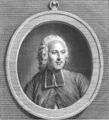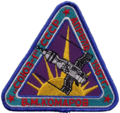Template:Selected anniversaries/April 24: Difference between revisions
No edit summary |
No edit summary |
||
| Line 64: | Line 64: | ||
||1990: STS-31: The Hubble Space Telescope is launched from the Space Shuttle Discovery. | ||1990: STS-31: The Hubble Space Telescope is launched from the Space Shuttle Discovery. | ||
||1997: Eugene Stoner dies ... engineer, designed the AR-15 rifle. | ||1997: Eugene Stoner dies ... engineer, designed the AR-15 rifle. Pic. | ||
||2000: George Michael Volkoff dies ... physicist and academic who helped, with J. Robert Oppenheimer, predict the existence of neutron stars before they were discovered. Pic. | ||2000: George Michael Volkoff dies ... physicist and academic who helped, with J. Robert Oppenheimer, predict the existence of neutron stars before they were discovered. Pic. | ||
Revision as of 04:23, 22 November 2019
1656: Mathematician and physicist Thomas Fincke dies. He introduced the modern names of the trigonometric functions tangent and secant.
1746: Priest, physicist, and practical joker Jean-Antoine Nollet discharges a battery of Leyden jars through a human chain, unexpectedly generating gray light, although the causes of gray light (in this case, electrical stimulation of a group of mathematicians) are poorly understood at the time.
1863: Printer, inventor, and crime-fighter Édouard-Léon Scott de Martinville patents new type of phonoautograph, which records crimes against mathematical constants as photographic images.
1914: The Franck–Hertz experiment, a pillar of quantum mechanics, is presented to the German Physical Society.
1915: Miniaturized version of John Ambrose Fleming delivers lecture from within Fleming tube.
1967: Cosmonaut Vladimir Komarov dies in Soyuz 1 when its parachute fails to open. He is the first human to die during a space mission.
2016: Signed first edition of Two Creatures 2 used in high-energy literature experiment unexpectedly develops spontaneous artificial intelligence.






